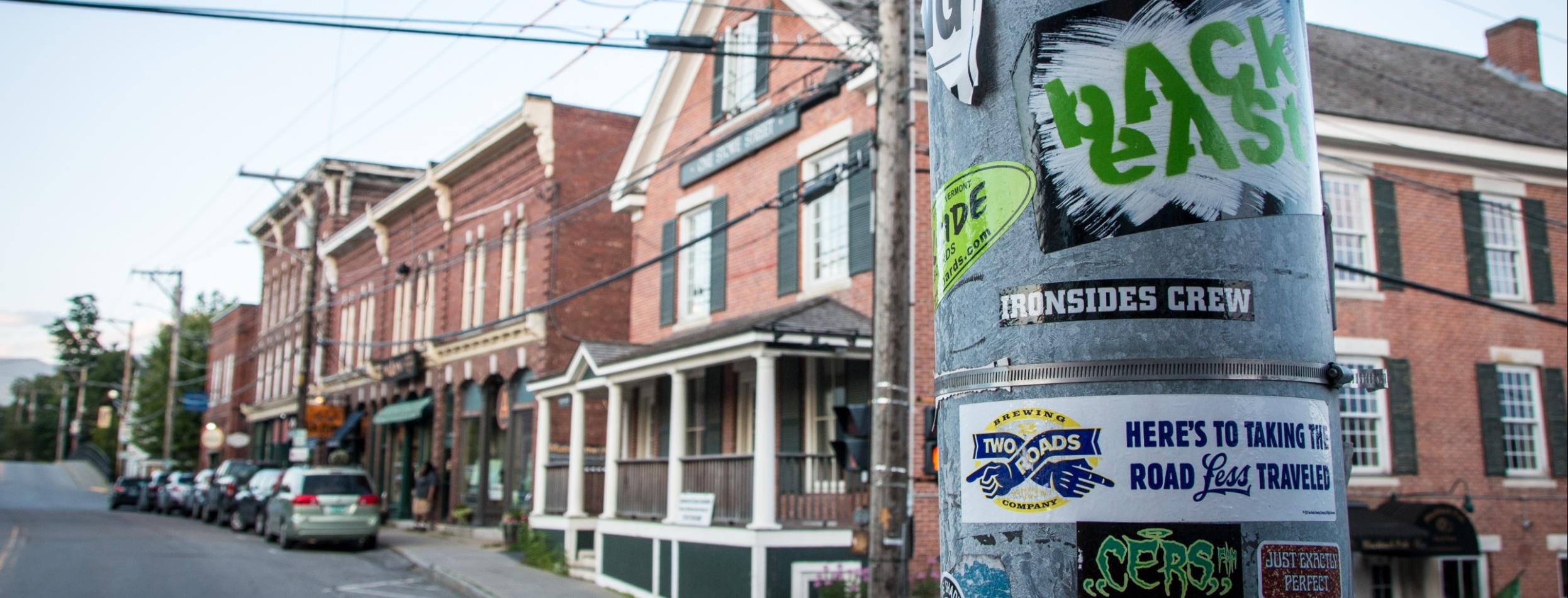
ABOUT WATERBURY
Waterbury, Vermont, located in the heart of Vermont's Green Mountains, is a vibrant community of just over 5,000 encompassing Waterbury Village Historic District, Waterbury Center, Colbyville, and several other districts and neighborhoods. Waterbury sits at the intersection of three of Vermont’s most heavily traveled and scenic roads; it is a mere 20-minute drive from Montpelier, 30 minutes from Burlington, and midway between the popular resort areas of Stowe and the Mad River Valley.
Downtown Waterbury is home to a mix of independent small businesses and restaurants, civic and cultural facilities, and residential neighborhoods. Just beyond, Waterbury is home to several popular recreation areas, including the Perry Hill bike trails, Waterbury Reservoir, and Little River State Park.
A BRIEF HISTORY OF WATERBURY
The earliest inhabitants of the area now known as Waterbury were Abenaki, who were likely drawn to the area by the abundance of resources, including water, timber, and fertile soil. Waterbury was chartered in 1763 under a grant from King George III of England. The name was selected by founding proprietors who primarily hailed from Waterbury, Connecticut.
The early economy was based on agriculture, including sheep and dairy farming, lumber, and a limited production of goods. In 1849, the Central Railroad brought significant economic growth and the rise of tourism to central Vermont and in 1882, the Village of Waterbury was incorporated with a population of over 2,200. The Waterbury portion of Interstate 89 opened in 1960, dramatically increasing accessibility to local businesses and recreational activities.
The Vermont State Hospital opened in 1891 and at its peak included over 40 buildings and 1,728 patients. By the 1980s, the facility began to close and in 2011, only one building was still being utilized to treat patients when Tropical Storm Irene permanently stopped operations.
The Great Flood of 1927 resulted in widespread devastation. To mitigate future flooding, the Army Corps of Engineers completed work on the Little River Dam in 1938, thereby forming the Waterbury Reservoir.
On August 28 and 29, 2011, Tropical Storm Irene became the second great flood to impact downtown Waterbury. Over $2.5 million in damage to small businesses alone was reported to Revitalizing Waterbury, and the community worked together to clean and rebuild downtown. From 2019 through 2021, a massive Main Street Reconstruction project was completed to improve the streetscape and sidewalks, upgrade outdated utilities, and further reduce the potential for downtown flooding.
LEARN MORE
Waterbury Village is listed on the National Register of Historic Places as a historic district. Contact the Waterbury Historical Society for more information on our unique history, or enjoy a self-guided historic walking tour of Waterbury. The Waterbury Historical Society and Town of Waterbury also offer additional information on the history of Waterbury, and individuals can access the Waterbury History Museum during select hours.
